Being a model isn’t just about looking great on camera - it’s a nonstop juggling act of runway rehearsals, photo shoots, travel, and tight deadlines. How do these women stay energized, clear‑skinned, and mentally sharp? Below we break down the real‑world habits that keep female models fit, focused, and ready for the next gig.
Core Pillars of Model Wellness
Most successful models build their routine around four core pillars: nutrition, movement, mental balance, and recovery. Ignoring any one of these can lead to burnout, skin flare‑ups, or even long‑term health issues.
Nutrition that Fuels the Frame
Nutrition is the process of providing the body with the right mix of calories, macronutrients, and micronutrients to support energy, growth, and repair. Models typically work with a certified dietitian who tailors a plan to their body type, metabolism, and the demands of upcoming shoots.
- Balanced macronutrients: A 45‑55% carbohydrate, 20‑30% protein, and 20‑30% healthy‑fat split keeps blood sugar stable and muscle mass intact.
- Frequent, small meals: Eating every 3‑4 hours prevents energy dips and curbs cravings during long days on set.
- Hydration: Hydration means drinking at least 2.5‑3L of water daily, plus electrolytes when travelling or after intense workouts.
Popular diet trends in the industry include the Mediterranean plate, plant‑based meals, and intermittent fasting (usually a 16‑hour fast). The key is flexibility - if a shoot requires a low‑carb look, models can shift carbs around the schedule without missing nutrients.
Movement: Strength, Flexibility, and Stamina
Exercise is any planned bodily activity that improves or maintains physical fitness, including strength, endurance, and flexibility training. Rather than a one‑size‑fits‑all plan, top models keep a hybrid regimen:
- Strength training - 2-3 sessions a week with free weights or resistance bands to sculpt lean muscle without bulk.
- Cardio - Low‑impact options like swimming, rowing, or brisk walking preserve stamina while sparing joints.
- Flexibility work - Yoga and Pilates improve posture, core stability, and reduce injury risk during long runway walks.
Many agencies recommend a personal trainer who can tweak the routine based on upcoming casting calls. A 45‑minute session is often enough; the goal is consistency, not marathon workouts.
Skincare: Protecting the Canvas
Skincare refers to the range of practices, products, and routines used to keep the skin clean, hydrated, and protected from damage. Models face harsh lighting, makeup, and travel‑induced dryness, so they adopt a strict regimen:
- Cleansing: Double‑clean with a gentle oil‑based cleanser followed by a foaming wash, twice daily.
- Moisturizing: Use a ceramide‑rich cream in the morning and a richer barrier repair at night.
- Sun protection: SPF30+ broad‑spectrum is non‑negotiable, even on cloudy days.
- Targeted treatments: Vitamin C serums for brightening, retinol for texture, and hyaluronic acid for plumping.
Regular visits to a dermatologist help manage acne, rosacea, or seasonal flare‑ups, ensuring the skin remains camera‑ready.
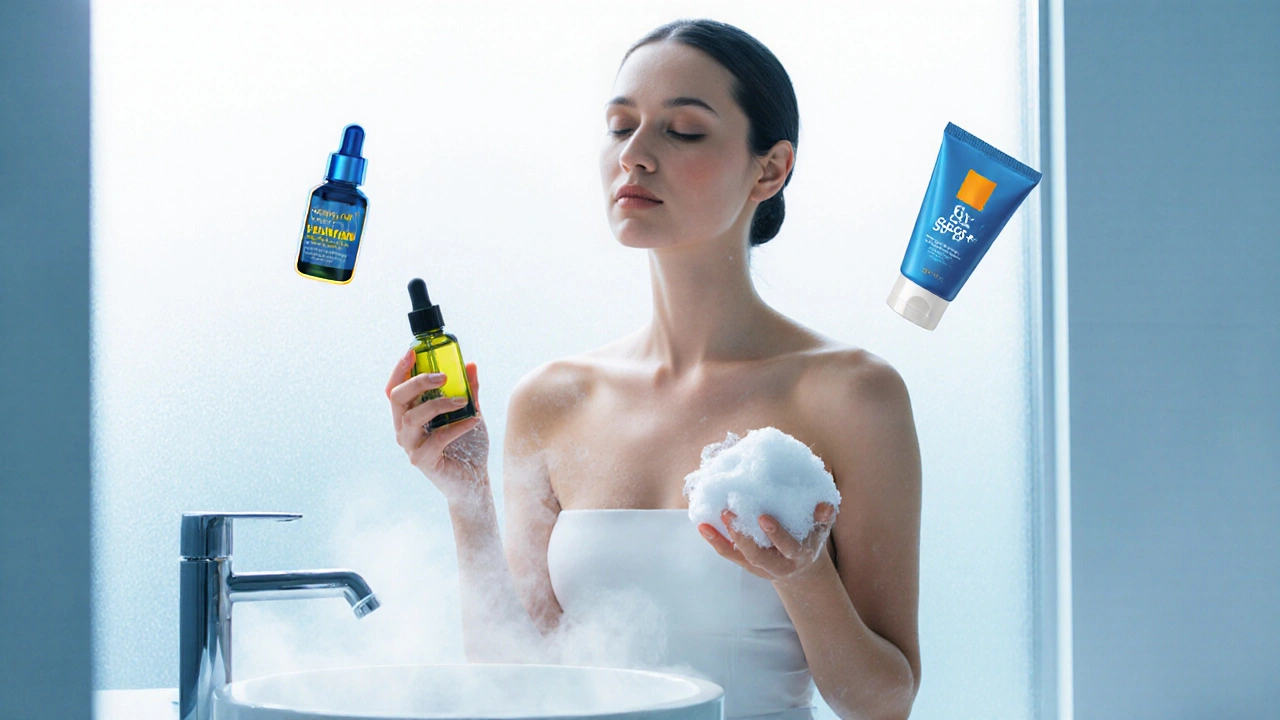
Mental Health: Managing Pressure and Image
Mental health encompasses emotional, psychological, and social well-being, influencing how individuals think, feel, and act. The modeling world can be relentless: constant scrutiny, fluctuating work, and social‑media feedback create unique stressors.
- Therapy and coaching: Many models schedule weekly sessions with a therapist specialized in performance anxiety.
- Mindfulness practices: Guided meditation apps or short breathing exercises (4‑7‑8 technique) reduce cortisol spikes before castings.
- Support networks: Staying connected with family, friends, or fellow models provides perspective and emotional safety.
Setting realistic expectations-focusing on skill development rather than solely on size-helps sustain long‑term confidence.
Sleep and Recovery: The Unsung Superpower
Sleep is a restorative state where the body repairs tissues, consolidates memory, and regulates hormones. Models aim for 7-9 hours nightly, but travel and night shoots often disrupt routines.
- Sleep hygiene: Dark, cool rooms; no screens 30 minutes before bed; and a consistent bedtime cue (e.g., reading a short article).
- Napping: 20‑minute power naps restore alertness without entering deep sleep cycles.
- Recovery tools: Foam rollers, massage guns, and occasional professional massages ease muscle tension.
When jet‑lag hits, a combination of light exposure (morning sunlight) and melatonin supplements-under medical guidance-can reset the circadian rhythm quickly.
Stress Management: Staying Balanced on the Go
Stress management involves techniques and habits that help individuals cope with pressures, maintain composure, and protect overall health. Below are quick tactics models use between bookings:
- Digital detox: Turning off Instagram notifications for a few hours each day reduces comparison anxiety.
- Journaling: Writing down three gratitudes each night anchors a positive mindset.
- Breathing breaks: The box‑breathing method (4‑4‑4‑4 seconds) can be done backstage before a runway.
These micro‑habits add up, preventing burnout and keeping motivation high.
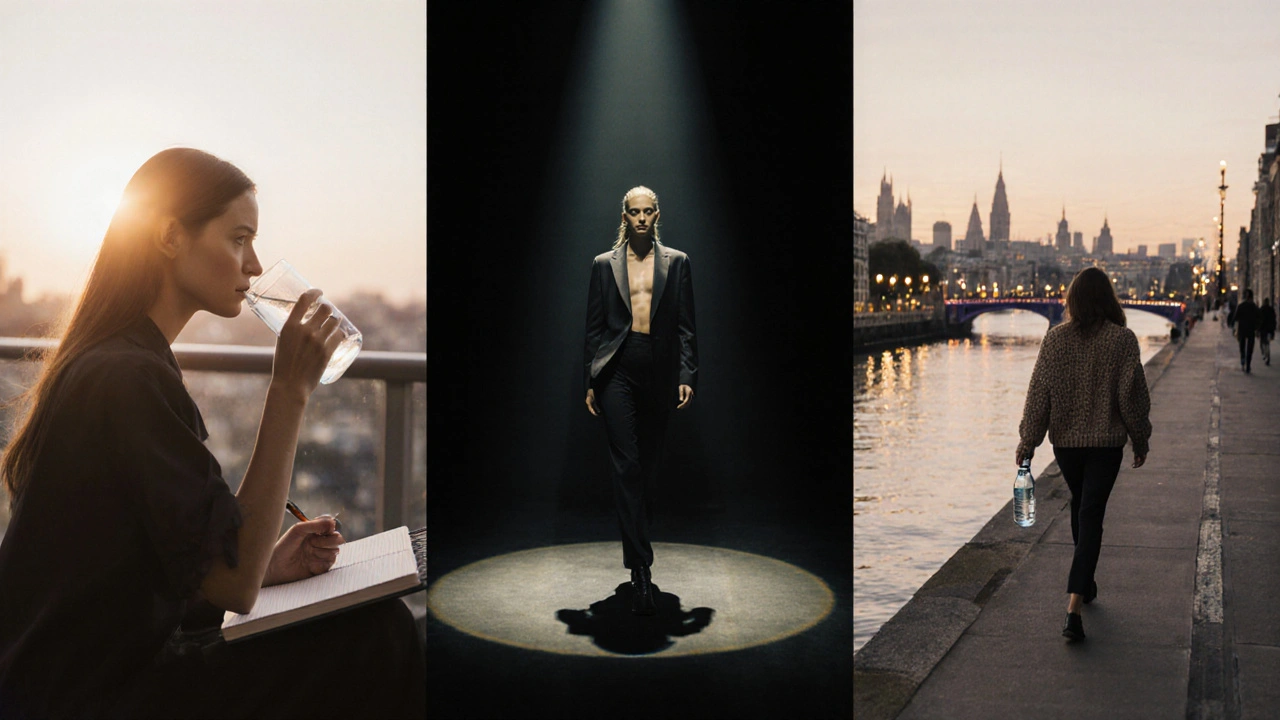
Real‑World Example: A Day in the Life of a Working Model
Emma, a 23‑year‑old commercial model based in London, follows a disciplined schedule that illustrates the pillars above:
- 6:30am - Wake, drink 500ml of water, short meditation (5min).
- 7:00am - Light breakfast: Greek yogurt, berries, and chia seeds (protein + carbs).
- 8:00am - 30‑minute Pilates session focusing on core stability.
- 9:30am - Review casting call briefs, reply to agency emails.
- 11:00am - Travel to studio, hydrate, apply SPF50 moisturizer.
- 12:00pm - Photo‑shoot: quick snack of a banana + almond butter during breaks.
- 4:00pm - Post‑shoot de‑brief, skin cleanse, apply retinol at night.
- 6:00pm - Dinner with lean protein (salmon), quinoa, roasted veg, and a glass of water.
- 8:00pm - 30‑minute walk, journal reflections, prepare outfit for next day.
- 10:00pm - Lights out, 8 hours of sleep.
Emma credits her consistent energy levels and clear skin to this routine, and she reports feeling mentally resilient even when bookings fluctuate.
Quick Reference Table: Popular Health Approaches for Models
| Strategy | Key Focus | Typical Foods | Potential Drawbacks |
|---|---|---|---|
| Balanced Mediterranean | Steady energy, heart health | Olive oil, fish, whole grains, legumes, fruits | May require more meal prep time |
| Plant‑Based | Anti‑inflammatory, eco‑friendly | Beans, tofu, nuts, leafy greens, quinoa | Needs careful B12 and iron monitoring |
| Intermittent Fasting (16/8) | Body‑fat control, simplicity | Whole‑food meals within 8‑hour window | Can cause low energy if not planned around shoots |
Practical Checklist: Staying Healthy on the Modeling Road
- Schedule a quarterly visit with a nutritionist.
- Plan workouts at least twice a week; mix strength and flexibility.
- Keep a travel‑size skincare kit: gentle cleanser, SPF, moisturizer.
- Set a daily water goal - use a marked bottle to track intake.
- Allocate 30minutes each night for a wind‑down routine (no screens).
- Carry a small notebook or phone app for gratitude journaling.
- Book an annual mental‑health check‑in, even if you feel fine.
Frequently Asked Questions
How many calories should a female model eat daily?
Most models aim for 1,800‑2,200kcal per day, adjusted for activity level, body size, and upcoming shoot requirements. A dietitian will calculate the exact number to keep weight stable while fueling performance.
Can I follow a vegan diet and still look runway‑ready?
Absolutely. Many top models thrive on vegan meals; the trick is to include protein‑rich foods (lentils, tempeh, pea protein) and supplement B12, iron, and omega‑3s to avoid deficiencies.
What are safe ways to manage sudden weight fluctuations before a show?
Rather than crash diets, models use short‑term carb‑cycling or increased water intake to temporarily reduce bloating. All changes are supervised by a professional to protect health.
How often should I see a dermatologist?
A quarterly check‑up is common, but if you notice persistent breakouts, redness, or sensitivity after a shoot, schedule an appointment sooner.
What quick stress‑relief technique works backstage?
Box breathing: inhale for 4 seconds, hold 4, exhale 4, hold 4. Repeat four times. It calms heart rate and sharpens focus without drawing attention.
Sticking to these habits doesn’t guarantee fame, but it does give female models a solid foundation to thrive in a demanding industry. By treating their bodies like the most valuable asset, they can enjoy longer careers, clearer skin, and a healthier mindset.
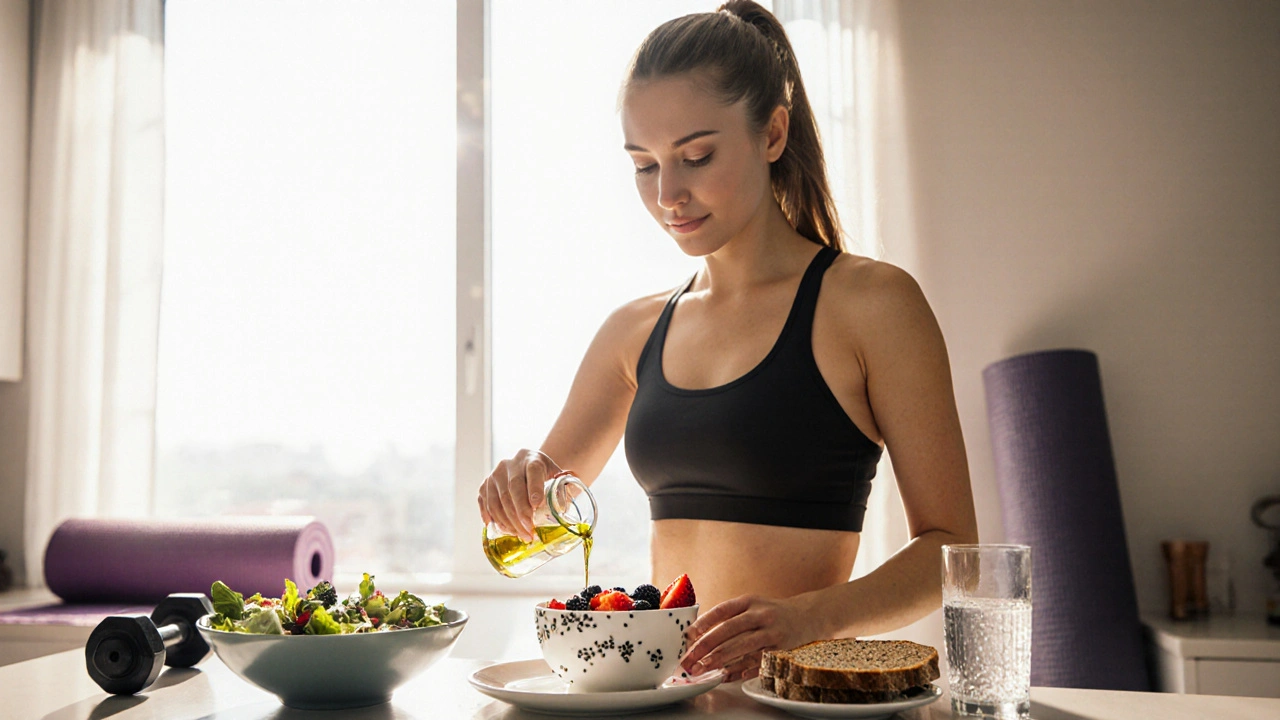

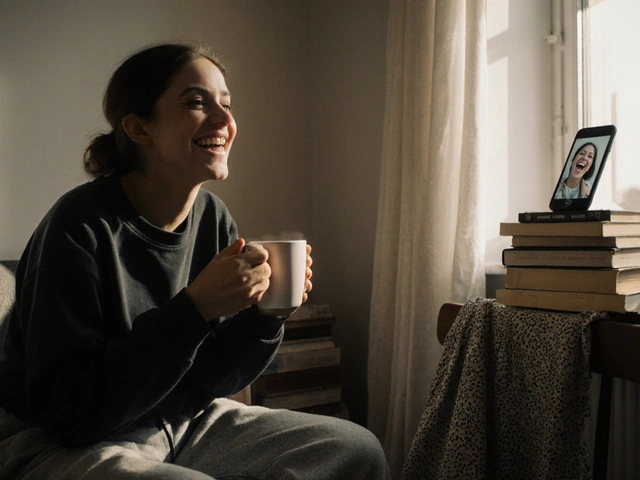


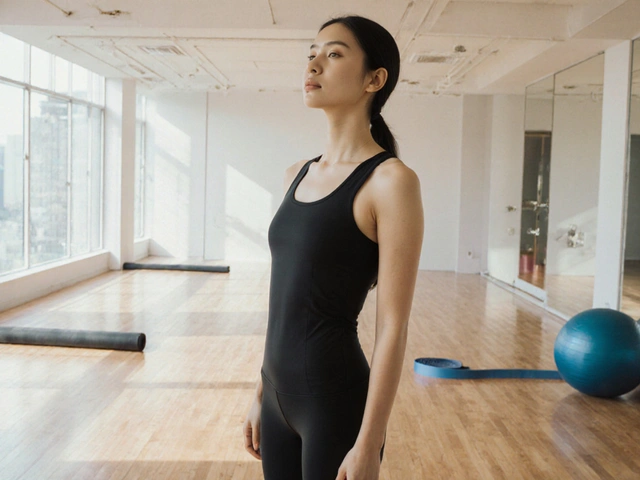
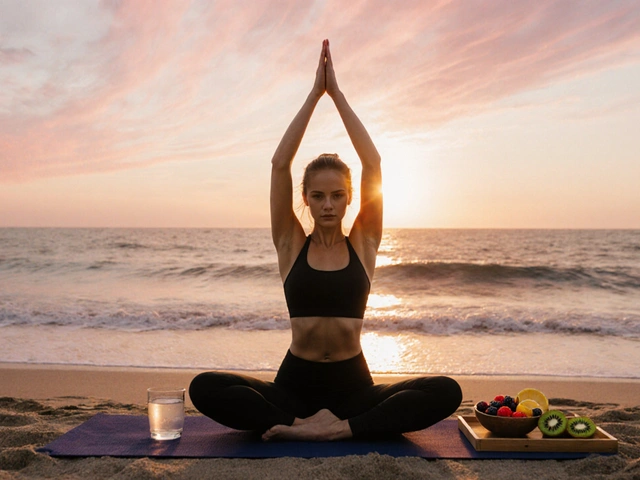
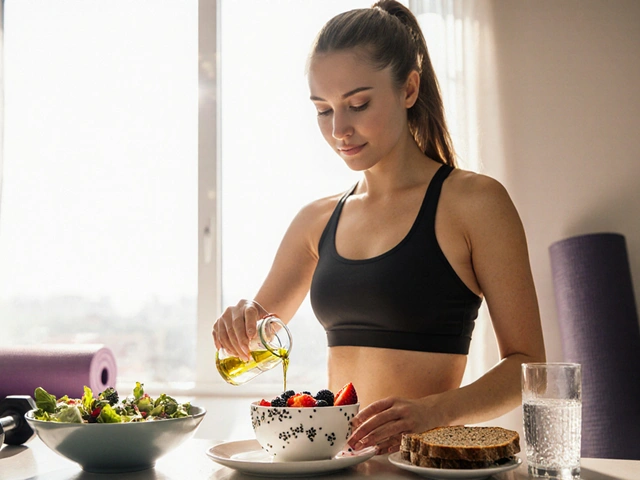
October 11, 2025 AT 21:46
Derren Spernol
Reading through the checklist feels like getting a backstage pass to a model’s daily rhythm. The way they split their macros reminds me of a well‑balanced investment portfolio, where each nutrient plays a different role in the overall return. Hydration, for instance, isn’t just about quenching thirst; it’s a catalyst for skin elasticity and joint health, especially during those back‑to‑back runway shows. The article’s emphasis on small, frequent meals mirrors the “grazing” strategy that athletes use to keep blood sugar stable. I love how the schedule slots in a 30‑minute Pilates session before the morning emails, because core stability translates directly to posture on the catwalk. The mention of box breathing backstage is a clever nod to the power of the autonomic nervous system in managing cortisol spikes. Sleep hygiene, with its dark room and screen‑free wind‑down, is practically a non‑negotiable for anyone who relies on quick recovery. The suggestion to use a marked water bottle is a simple visual cue that turns hydration into a habit loop. Having a quarterly dermatologist visit feels like a preventative maintenance check, similar to a car’s oil change. The mental health section highlights therapy, which I think should be as routine as a warm‑up stretch. Digital detoxes, even if only for a few hours, can curb the endless scroll that fuels comparison anxiety. The article’s breakdown of three dietary strategies-Mediterranean, plant‑based, intermittent fasting-covers a broad spectrum of metabolic needs. I appreciate the flexibility mentioned; shifting carbs around a low‑carb shoot shows an adaptive mindset. The inclusion of recovery tools like foam rollers and massage guns adds a tactile dimension to the recovery narrative. Overall, the piece stitches together nutrition, movement, skin care, mindset, and recovery into a cohesive tapestry that models can actually live by. It’s a practical roadmap that demystifies the glamour‑filled façade and grounds it in science‑backed habits.
October 11, 2025 AT 22:46
Sharon Bryant
I can’t believe anyone would skip these essential wellness basics!
October 12, 2025 AT 00:00
Triston Hargrave
When we consider the body as a temple, the rituals outlined become sacraments of self‑respect, each act of hydration or mindful breath a prayer to the inner deity. Yet modern culture often treats the model’s career as a fleeting mirage, ignoring the steady discipline that sustains it. The paradox lies in the public’s obsession with the finished image while neglecting the invisible labor that creates it. By integrating such holistic practices, models transform from passive subjects into active architects of their own health. It’s a subtle rebellion against the industrial machine, and I love it :)
October 12, 2025 AT 01:00
Jodie Rae Plaut
Yo, the routine you described is basically a bio‑feedback loop: macronutrient timing, circadian rhythm alignment, and neuro‑plasticity via meditation all feed into performance metrics. Think of the 45‑minute strength session as a micro‑dose of hypertrophy that preserves lean mass without triggering anabolic over‑load-perfect for runway aesthetics. And that “digital detox” is just a form of sensory attenuation to reset the default mode network, which reduces mental clutter. If you slot in a quick 5‑minute progressive muscle relaxation after the Pilates, you’ll boost parasympathetic tone even more. Bottom line: keep the jargon, but stay chill-your skin and mind will thank you.
October 12, 2025 AT 02:00
Colin Napier
Honestly, the article hits most of the key points, however, there are a few nuances that deserve clarification: firstly, the recommendation of 2.5‑3 L of water per day is a baseline, not a ceiling, and should be adjusted according to individual sweat rates, especially during high‑intensity cardio sessions; secondly, intermittent fasting, while popular, can actually impair glycogen replenishment if a model’s schedule includes multiple evening photo‑shoots, thus compromising both energy levels and skin radiance; thirdly, the mention of “quick naps” ought to specify the sleep inertia phenomenon, which can temporarily diminish cognitive performance if the nap exceeds 30 minutes; finally, the sleep hygiene tips are solid, yet the article omits the role of blue‑light filtering glasses, a simple tool that mitigates melatonin suppression during late‑night editing. All in all, the guide is solid, but a few extra details could make it truly comprehensive.
October 12, 2025 AT 03:00
Patsy Ferreira
Wow, this post really trys to sound all inclusive, but it completely glosses over the unethical pressure models face to stay ultra‑thin, which is a massive health red flag. Also, the suggested 1,800‑2,200 kcal range is too low for anyone doing strength training, even if they think they're "dieting"-it's basically a recipe for nutrient deficiency. And let's be real, the whole "digital detox" bit is just marketing fluff; most models are forced to stay online 24/7 for agency updates, so telling them to turn off Insta is naive. Not to mention, the article forgets to mention the mental toll of constant body shaming-this isn't just a "quick stress‑relief technique", it's a deep‑seated trauma that needs professional intervention. If you want to call this "wellness", you better include real solutions, not just feel‑good buzzwords.